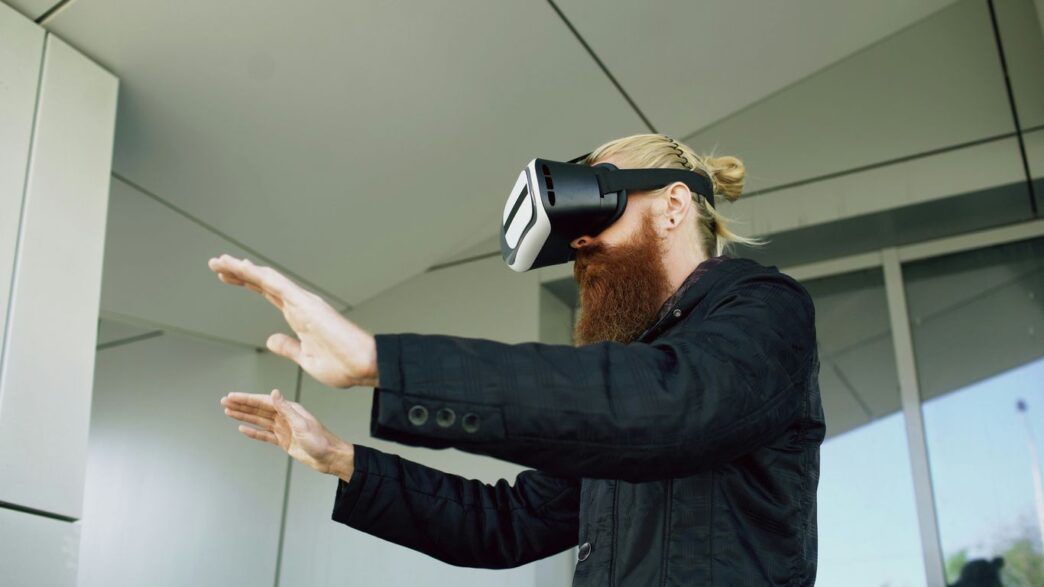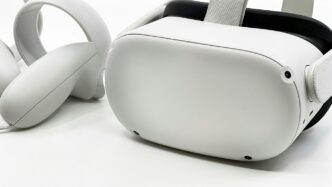The world of XR, or Extended Reality, is growing fast. It’s more than just games; it’s changing how we work, learn, and connect. Lots of groups and tools are popping up to help build this future. We’re going to look at some of the important ones, the xr associations, that are making this happen.
Key Takeaways
- Unity and Ethereum/Solidity are big for making virtual worlds and their economies work.
- Research groups like TNO and centers like ISM AI and XR Resource Center are figuring out how we’ll interact socially and do business in XR.
- XR is showing up in healthcare and education, with special training and new ways to learn and treat patients.
- XRAtlas and market trend reports help us understand the whole XR picture and where it’s headed.
- Creating digital versions of ourselves with tools like Genies and Hologram is a major part of XR.
Foundational XR Development and Infrastructure

Building the future of extended reality (XR) and the metaverse isn’t just about cool headsets or flashy virtual worlds. It’s about the underlying tools and systems that make it all possible. Think of it like building a house – you need a solid foundation, the right materials, and a good blueprint. In the XR space, this means powerful development platforms and the infrastructure for digital economies.
Unity: A Versatile Real-Time 3D Development Platform
When it comes to creating interactive 3D content, Unity is a name you’ll hear a lot. It’s a really flexible engine that lets developers build experiences for virtual reality (VR), augmented reality (AR), and pretty much any other platform you can think of. Whether you’re making a game, a training simulation for doctors, or a virtual storefront, Unity has the tools. Its editor is pretty user-friendly, and you can script with C# to add all sorts of complex behaviors. Plus, the Unity Asset Store is packed with pre-made models, scripts, and tools that can save you a ton of time. It’s a go-to for anyone serious about making interactive stuff for the metaverse. If you’re looking to get into building these kinds of digital worlds, Unity is a solid place to start.
Ethereum and Solidity: Building Blocks for Decentralized Metaverse Economies
For the metaverse to really take off, especially in terms of ownership and commerce, we need secure ways to handle digital assets and transactions. That’s where blockchain technology comes in. Ethereum is a major player here. It’s a platform that allows for decentralized applications (dApps) and smart contracts. Smart contracts are basically self-executing agreements written in code, and they’re key to making things like non-fungible tokens (NFTs) work. The programming language most commonly used for these smart contracts on Ethereum is called Solidity. Together, Ethereum and Solidity provide the backbone for creating secure digital ownership, managing virtual economies, and ensuring that transactions in the metaverse are verifiable and trustworthy. Understanding these technologies is pretty important if you’re interested in the economic side of virtual worlds. You can find out more about Ethereum and its capabilities.
Pioneering Research and Social XR Initiatives
It’s pretty wild how much research is going into making virtual spaces feel more real and connected. We’re not just talking about games here; there’s some serious work happening to bridge distances and make social interactions in XR feel more natural.
TNO’s Social XR Research: Bridging Distances Through Virtual Interaction
TNO, a big research group, is doing some really interesting stuff with what they call ‘Social XR’. Basically, they’re trying to build technologies that make it easier for people to connect and interact in virtual environments, almost like they’re in the same room. This could change how we socialize, work, and even learn together online. They’re looking at how to make these virtual interactions feel more genuine and less like you’re just staring at a screen.
ISM AI and XR Resource Center: Practical Applications and Business Insights
Then you’ve got places like the ISM AI and XR Resource Center. These folks have been around the block a few times, using tech to help businesses. They’ve put together a bunch of case studies, articles, and videos that show how XR and AI are actually being used in the real world, especially when it comes to the metaverse. It’s a good spot to get a handle on the practical side of things and figure out what it all means for businesses. They break down complex ideas into stuff that makes sense, which is pretty handy when you’re trying to keep up with all this new tech.
Advancing XR in Healthcare and Education

It’s pretty wild how fast things are changing in healthcare and education, especially with new tech like XR. You know, the stuff that blends the real world with digital elements. The government’s been pushing for more digital know-how in healthcare for a while now, and the pandemic really sped things up. Now, the NHS is talking a lot about making sure its workers can handle these new digital tools.
XR Deep Dive Training Sessions: Enhancing Digital Literacy in Healthcare
So, a big part of this is making sure healthcare workers actually know how to use these XR tools. A lot of places are trying out XR for things like surgery, rehab, and teaching, and the results are looking good. But, just having the tech isn’t enough. People need to be trained. That’s where programs like the "XR Deep Dive" come in. These sessions are designed to give healthcare pros a hands-on feel for XR. They get to play around with the tech, see how it works, and then talk about how it could be used in their own jobs. It’s all about making the idea of using XR in healthcare feel less like science fiction and more like a real possibility.
- Hands-on Experience: Participants get direct time with XR devices, which is a big deal for people new to the tech.
- Real-World Examples: The training shows actual XR projects already being used in healthcare, making it relatable.
- Group Discussion: Time is set aside for people to talk about what they’ve learned and brainstorm ideas for their own work settings.
Virtual and Augmented Reality Applications in Medicine
XR, especially VR and AR, is starting to show up in a lot of medical areas. Think about training surgeons with realistic simulations or helping patients with physical therapy using interactive environments. Some hospitals are even using AR to give doctors extra information right in their line of sight during procedures. It’s not just about the fancy tech, though; it’s about how it can actually help patients get better care and how it can make training more effective.
Immersive Learning Through Virtual and Augmented Reality
In education, XR is opening up new ways to learn. Instead of just reading about ancient Rome, students could virtually walk through it. Medical students can practice complex procedures in VR without any risk to real patients. This kind of immersive learning sticks with people better than just looking at a book or screen. It makes abstract concepts feel more concrete and can really spark interest in subjects that might otherwise seem dry. The goal is to make learning more engaging and memorable for everyone involved.
Understanding the XR Ecosystem and Market Trends
So, you want to get a handle on what’s happening with XR, AI, and the whole metaverse idea? It’s a lot, I know. Things are moving fast, and keeping up can feel like trying to catch lightning in a bottle. But there are some solid places to get information and see how this stuff is actually being used.
XRAtlas: A Hub for XR, AI, and Metaverse Technologies
Think of XRAtlas as your go-to spot for news and insights. They put out newsletters and podcasts that cover the latest happenings in Extended Reality, Artificial Intelligence, and the metaverse. It’s a good way to stay in the loop without getting overwhelmed. They focus on what’s new and what it means for the future.
Global XR Adoption and Market Trends
It’s interesting to see how quickly XR is spreading. We’re not just talking about games anymore. Businesses are finding ways to use it for training, design, and even customer service. The market is growing, and different regions are adopting the technology at different speeds. Some areas are really jumping in headfirst, while others are taking a more cautious approach.
Here’s a quick look at some general trends:
- Hardware Advancements: Headsets are getting lighter, cheaper, and better. This makes them easier for more people to use.
- Software Sophistication: The applications are becoming more complex and useful, moving beyond simple demos.
- Industry Integration: More companies are figuring out practical uses for XR in their day-to-day operations.
- Content Creation: Tools are becoming more accessible, allowing more people to build XR experiences.
Challenges and Future Research in XR Communication
Even with all the progress, there are still hurdles. One big area is how we communicate within these virtual spaces. Making sure interactions feel natural and that the technology can handle lots of users at once is a work in progress. We also need to think about the infrastructure needed to support these experiences, especially as they get more complex. Things like latency, data privacy, and security are super important. Researchers are looking into how to make XR communication better, thinking about things like advanced haptic feedback (feeling things virtually) and making sure these virtual worlds are safe and ethical spaces for everyone. It’s a big puzzle, but solving it will really shape how we connect in the future.
Digital Identity and User Interaction in XR
So, how do we actually show up and act in these virtual worlds? That’s where digital identity and how we interact come into play. It’s not just about putting on a headset; it’s about creating a version of yourself, or maybe a whole new persona, that can exist and communicate in these digital spaces.
Genies: Crafting Customizable Digital Avatars
Think about walking into a party. You want to make a good impression, right? In the metaverse, that’s where avatars come in. Genies is a company that’s really making waves in this area. They let you build these super detailed digital versions of yourself, or whatever you want to be, really. It’s not just about a basic character model anymore; we’re talking about digital fashion, unique looks, and expressing yourself in ways you might not in the real world. Your avatar is your calling card in the metaverse. It’s how you’ll be recognized and how you’ll present yourself to others.
Hologram: Creating Digital Identities and Virtual Beings
Hologram takes this a step further. They’re not just about static avatars; they’re building platforms where you can create and even animate virtual characters. Imagine being able to stream yourself as a digital being, moving and interacting in real-time. This really changes how we think about presence and connection. It’s about more than just looking like someone; it’s about embodying a digital identity that can participate in virtual events, games, or just hang out with friends. It opens up a lot of possibilities for performance, entertainment, and just plain old socializing in new ways.
Wrapping It Up
So, we’ve looked at a bunch of different groups and places that are really involved in XR and the metaverse. It’s clear this stuff isn’t just science fiction anymore; it’s being built right now by people working on everything from how we connect socially in virtual spaces to the actual tech that makes it all work. Whether you’re a developer, a researcher, or just curious, keeping an eye on these organizations and what they’re doing is a good idea. The landscape changes fast, but by paying attention to these key players, you’ll have a better sense of where things are headed and how you might fit in. It’s an exciting time to see what comes next.
Frequently Asked Questions
What is XR and how is it different from the Metaverse?
XR, which stands for Extended Reality, is like a big umbrella term that covers Virtual Reality (VR), Augmented Reality (AR), and Mixed Reality (MR). These technologies mix the real world with digital stuff to create cool, immersive experiences. The Metaverse is more like a future version of the internet – a huge, connected online space with 3D worlds where people can hang out, play, and work together using digital versions of themselves.
Why are game engines like Unity important for XR and the Metaverse?
Think of game engines like Unity as the construction tools for building virtual worlds. Unity is super popular because it lets people create all sorts of interactive 3D experiences for VR and AR. It’s used to build everything from fun games to training programs that feel real.
How do things like Ethereum and Solidity help build the Metaverse?
Ethereum is a special type of computer network called a blockchain. Solidity is a language used to write instructions for this network. Together, they’re really important for making sure digital items in the Metaverse, like unique virtual clothes or art, can be owned securely and traded fairly. It’s like building the digital economy.
What are digital avatars and why do they matter in XR?
Digital avatars are like your online characters or cartoon versions of yourself that you use in virtual spaces. Companies like Genies let you create very unique and personalized avatars, which is important because it’s how you’ll express yourself and be recognized when you interact with others in the Metaverse.
How is XR being used in healthcare and education?
In healthcare, XR can help doctors practice difficult surgeries in a safe virtual space or help patients recover through virtual therapy. In schools, it can make learning more exciting, like taking a virtual field trip to ancient Rome or exploring the human body in 3D. It makes learning and training more hands-on and engaging.
Where can I find more information about the latest XR and Metaverse trends?
Keeping up with this fast-changing world is key! Resources like XRAtlas offer newsletters and podcasts packed with the newest news, research, and insights into XR, AI, and the Metaverse. They’re great places to learn about what’s happening and what’s coming next.














